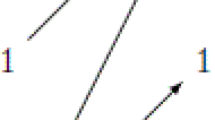Abstract
The effect of the presence of a feedback channel on the transmission of information was first considered by Shannon, who showed that the capacity of a memoryless channel is not increased by the existence of a feedback link even if the feedback link is noiseless. Later it was shown that the information on a feedback channel can be used to improve considerably the performance of channel coding. In this work we study the transmission of an information source through a fading channel with feedback, modeled by a finite-state channel in the Gilbert-Elliot sense. We show that by employing the feedback information in the quantizer design for this finite-state channel, one can achieve lower overall distortion compared to the case where feedback is not available. The feedback channel is used to estimate the channel state using a hidden Markov model, and a quantizer matched to the channel state is chosen based on this information.
Similar content being viewed by others
References
C. E. Shannon, The zero error capacity of a noisy channel,IRE Transactions on Information Theory, Vol. IT-2, pp. 8–19, 1956.
A. J. Viterbi, The effect of sequential decision feedback on communication over the Gaussian channel,Information and Control, Vol. 8, pp. 80–92, 1965.
G. L. Turin, Signal design for sequential detection systems with feedback,IEEE Transactions on Information Theory, Vol. IT-11, pp. 401–408, 1965.
M. Horstein, Sequential transmission using noiseless feedback,IEEE Transactions on Information Theory, Vol. IT-9, pp. 136–141, 1963.
J. P. M. Schalkwijk and T. Kailath, A coding scheme for additive noise channels with feedback—Part I,IEEE Transactions on Information Theory, Vol. IT-12, pp. 172–177, 1966.
A. S. Amanullah and M. Salehi, Joint source-channel coding in the presence of feedback,Proceedings of the Twenty Fifth Asilomar Conference on Communications, Computers and Signal Processing, Pacific Grove, CA, 1993.
E. N. Gilbert, Capacity of a burst noise channel,Bell System Technical Journal, pp. 1253–1265, September 1960.
E. O. Elliot, Estimates of error rates for codes on burst-noise channels,Bell System Technical Journal, pp. 1977–1997, September 1963.
L. N. Kanal and A. R. K. Sastry, Models for channels with memory and their applications to error control,Proceedings of the IEEE, Vol. 66, pp. 724–743, 1978.
A. Kurtenbach and P. Wintz, Quantizing for noisy channels,IEEE Transactions on Communication Technology, Vol. COM-17, pp. 291–302, 1969.
N. Farvardin and V. Vaishampayan, Optimal quantizer design for noisy channels: An approach to combined source channel coding,IEEE Transactions on Information Theory, Vol. IT-33, pp. 827–838, 1987.
E. Ayanoglu and R. M. Gray, The design of joint source and channel trellis waveform codes,IEEE Transactions on Information Theory, Vol. IT-33, pp. 855–865, 1987.
Author information
Authors and Affiliations
Rights and permissions
About this article
Cite this article
Amanullah, A.S., Salehi, M. Adaptive quantization for fading channels with feedback. Int J Wireless Inf Networks 2, 83–90 (1995). https://doi.org/10.1007/BF01464458
Issue Date:
DOI: https://doi.org/10.1007/BF01464458




